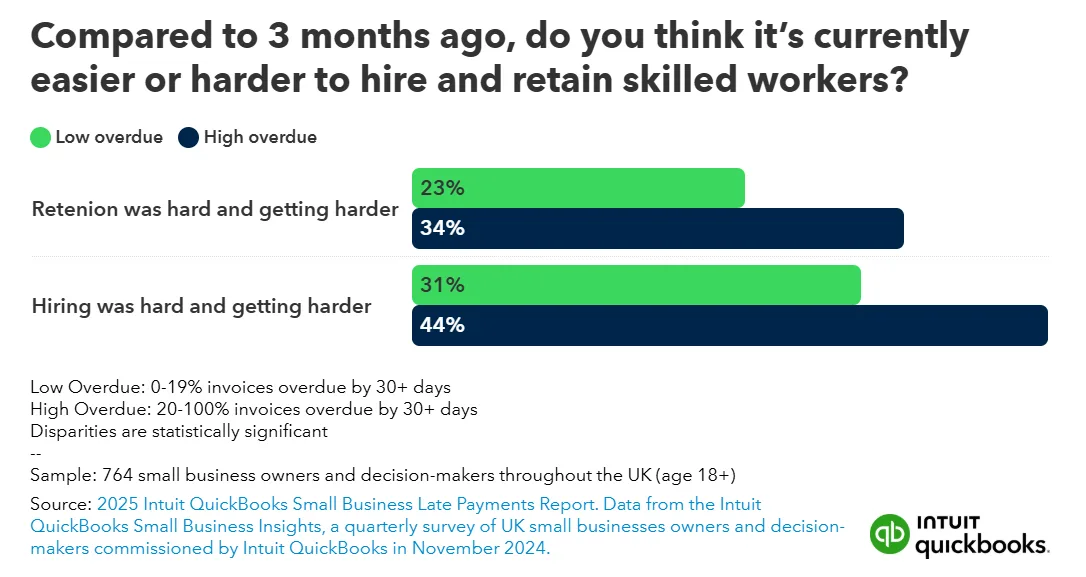High DSO can choke cash flow before anyone sees it coming.
At first, it’s just a few delayed payments. But over time, those delays stack up—making forecasts unreliable and squeezing liquidity when it’s needed most. For growing businesses, this is a barrier to scale.
The real problem? Most setups treat days sales outstanding as an operational afterthought. Something that they are supposed to monitor instead of actively managing.
This blog looks at how finance teams can change that approach. It explores how outsourced credit control introduces the structure, consistency, and follow-through needed to bring DSO reduction back into focus, and unlock cash that’s stuck in the system.
Why DSO Matters More Than You Think
When days sales outstanding rises, the effects ripple far beyond the AR team. Cash flow tightens. Liquidity planning gets shaky. And decisions that should be strategic (like when to invest or hire), start getting delayed for all the wrong reasons.
The bigger risk? Most businesses don’t spot the issue early. Late payments build slowly. Disputes stay unresolved. Ageing reports get buried. And by the time the numbers raise a red flag, there’s already pressure on the balance sheet.
That’s why high-performing finance teams don’t treat DSO as just another metric. They track it, challenge it, and build systems that keep it in check before it starts dragging the business down.
How to Calculate Days Sales Outstanding (the Right Way)
There’s nothing complex about the math but plenty can go wrong in how it’s applied.
The standard Days Sales Outstanding formula is:
DSO = (Accounts Receivable ÷ Total Credit Sales) × Number of Days
It’s straightforward on paper. But the accuracy depends on clean, consistent data, and on choosing the right approach for your business model. Most teams rely on this static method, plugging in monthly or quarterly figures. It works for a quick snapshot, but it can oversimplify what’s really happening, especially in high-volume or seasonal businesses.
That’s where the countback method comes in. Instead of looking at one period in isolation, it ties receivables back to actual sales patterns, giving a more reliable view of performance over time.
Knowing how to calculate Days Sales Outstanding is just step one. The real value comes from understanding what the number is signaling—whether it’s stretched payment terms, invoicing gaps, or a weak credit control process.
Why Outsourced Credit Control Works When In-House Models Fall Short
Most finance teams know DSO needs to come down. But knowing the goal and having the structure to get there are two very different things. In-house credit control often runs on effort, not systems. Follow-ups are manual. Risk isn’t segmented. Disputes get passed around. Teams chase invoices without a clear sense of where the real leaks are.
It works until the business scales. Then it stalls.
With the right partner, credit management outsourcing introduces structure, consistency, and accountability across the receivables lifecycle. Here’s what strong outsourced credit control services bring to the table:
- Segmented follow-up strategies that target risk, not just overdue days
Every account isn’t treated the same. High-value and high-risk customers follow tailored paths with stricter timelines, different escalation routes, and closer tracking.
- Daily AR visibility with built-in performance metrics
No more waiting for month-end reports. Outsourced teams operate on live dashboards, making it easier to course-correct mid-cycle instead of post-mortem.
- Escalation protocols that run on process, not bandwidth
No more “we missed it” scenarios. Recovery paths are pre-set, with triggers that auto-initiate next steps—whether that’s internal review or legal handoff.
- Flexibility to scale without diluting control
Whether collections spike in Q4 or dip in a slow cycle, capacity flexes without compromising on coverage, tone, or speed.
What Actually Moves the Needle on DSO
Once the right structure is in place, the focus shifts to what really drives results. And when it comes to DSO reduction, it’s usually about doing the right things, consistently.
Here’s what that looks like in practice:
- Follow-ups that don’t drop off after week two: The difference isn’t just sending reminders—it’s about maintaining a rhythm that holds through volume spikes and staffing gaps. When the cadence stays intact, payment timelines do too.
- Live data that supports daily decisions: Month-end reports are useful. But they don’t help when delays are already compounding. With real-time insights into days sales outstanding, finance teams can act early before overdue turns into written off.
- Dispute resolution that’s built for pattern spotting: Most delays aren’t isolated. The same issue shows up across accounts, often for weeks. Experienced teams know how to connect those dots and push fixes upstream before cash flow gets hit.
- Effort that matches exposure: Chasing every overdue invoice with the same urgency doesn’t move the needle. Outsourced teams use segmentation to direct more energy toward the riskiest or most valuable accounts.
- Tighter policy execution across teams and regions: Misalignment slows things down. Whether it’s unclear terms, missing documentation, or inconsistent escalation, small gaps add up fast. When policies are applied cleanly, credit control services perform better and collections speed up.
These process tweaks often form the difference between a collections team that’s always catching up—and a finance function that’s in control of its accounts receivable.

The Bottom-Line Impact
When receivables are under control, cash flow becomes more predictable. Planning gets sharper. And finance leaders have more room to make moves without second-guessing the numbers.
Effective DSO reduction also reduces the need for reactive funding. There’s less pressure to draw on credit lines or delay key investments. Instead of working around late payments, teams can operate with more clarity and control.
You also start seeing the downstream effects:
- Fewer write-offs
- Tighter working capital cycles
- Higher forecasting accuracy
- A finance function that shifts from chasing payments to driving decisions
And because outsourced credit control services run on KPIs, not assumptions, performance is easier to measure—and improve.
At QX, we help businesses build AR functions that scale—through structured workflows, real-time visibility, and specialist teams focused on outcomes. Whether you’re looking to shorten ageing, regain control over collections, or reduce dependency on short-term funding, our solutions are built for long-term impact.
Ready to reduce DSO and unlock working capital? Speak to our finance transformation experts today and build a credit control setup that actually works.
FAQs
How quickly can outsourced credit control reduce DSO?
Many businesses see improvement within 1–3 months, depending on account volume and existing processes.
What metrics should I track to monitor DSO reduction?
Track Days Sales Outstanding (DSO), aging reports, collection effectiveness index, and average payment terms.
What are the common challenges in managing DSO?
Delayed invoicing, inconsistent follow-ups, poor customer data, and limited internal bandwidth.
What are the benefits of outsourced credit control service?
Faster collections, lower DSO, skilled resources, improved cash flow, and scalable operations without hiring.
How do I choose the right outsourced credit control provider?
Check for industry expertise, track record in reducing DSO, tech compatibility, data security, and flexible engagement model.
Originally published Jun 16, 2025 01:06:41, updated Jul 16 2025
Topics: Credit Control Process, Finance and Accounting Transformation
Don't forget to share this post!









